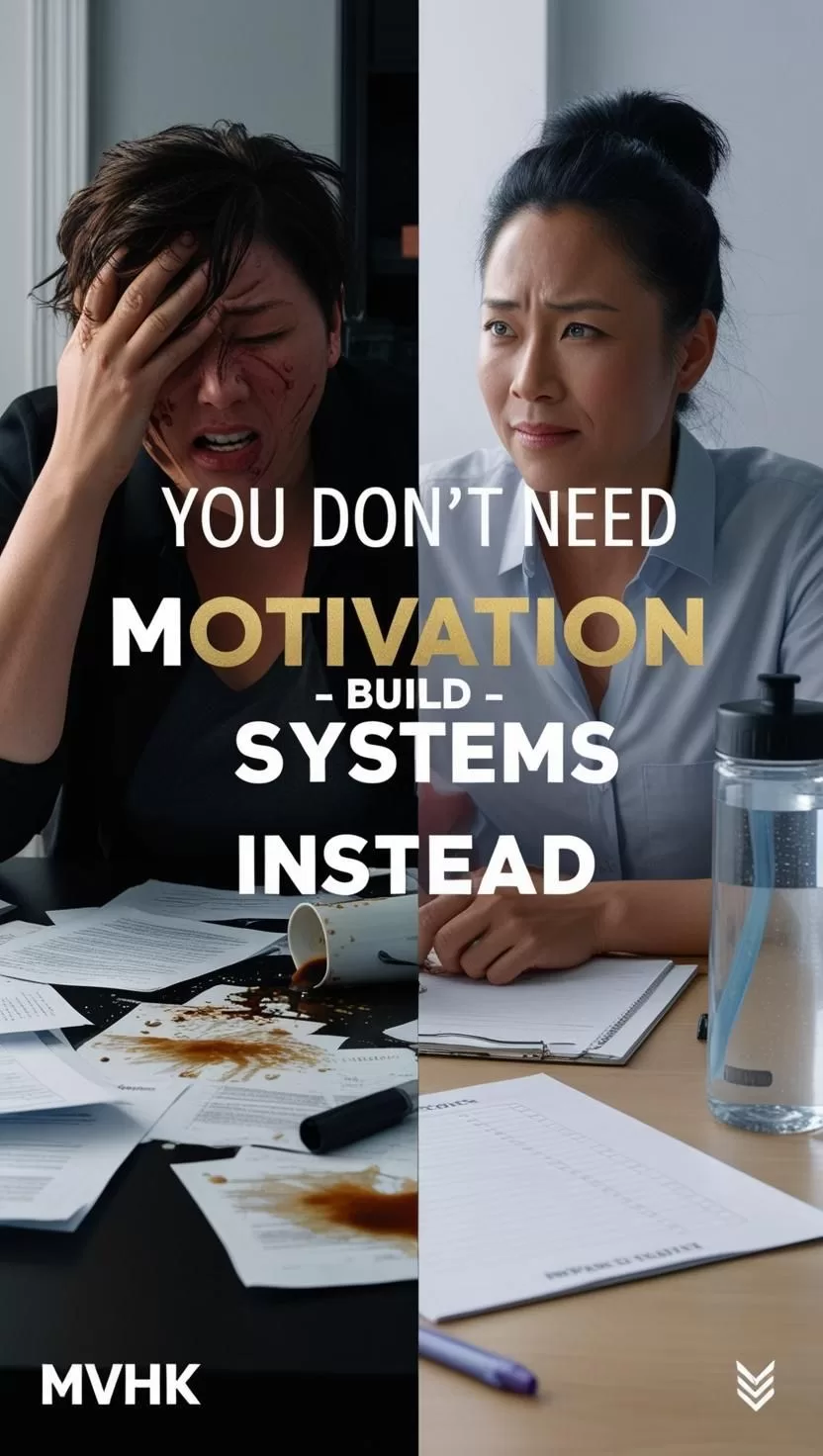Success Without Motivation: Build Habit Systems That Work
Most people think they need more motivation to achieve their goals. But here’s the uncomfortable truth: motivation is fleeting, unreliable, and often irrelevant. What you actually need is a system—a structured set of repeatable actions that deliver progress automatically.
In this article, we’ll explore why relying on motivation fails and how to build habit-based systems that make success inevitable.
1️⃣ Why Motivation Fails Every Time
The Problem with Willpower
Willpower is like a battery. It drains quickly, especially under stress, fatigue, or emotional strain. Research from the American Psychological Association confirms that decision fatigue and stress significantly reduce self-control, making willpower a poor long-term strategy.
The Myth of Motivation Peaks
Waiting for a “motivated” mood sets you up for inconsistency. That’s why most New Year’s resolutions collapse by February (Forbes, 2024). Emotion-based action isn’t sustainable.
2️⃣ What Are Habit-Based Systems?
Defined: A System > A Goal
A system is a process that leads you to your desired outcome. Unlike goals, which are results-oriented, systems are action-oriented.
| Goal | System |
|---|---|
| Lose 20 pounds | Eat 3 protein-rich meals a day + 30 min walk |
| Write a book | Write 500 words every morning before work |
| Get stronger | Train upper body 3x/week using a push-pull split |
Micro-Habits = System Fuel
The best systems are built on tiny, repeatable actions—”micro-habits”—that don’t require motivation. According to BJ Fogg’s Tiny Habits research, even flossing one tooth can trigger a cascade of larger health habits.
3️⃣ How to Build a System That Works
Start with the Outcome
- Define a clear, measurable result.
- Ask: What small actions, if repeated, would guarantee this result?
Reverse Engineer the Process
Elite performers don’t “wing it”—they systemize everything. Study their routines, break them down, and adapt them.
For example:
- Fitness goal: Use a habit tracker to log workouts.
- Nutrition goal: Prep meals on Sundays in 90-minute blocks.
- Focus goal: Use the Pomodoro method with a distraction blocker.
Use Triggers and Rewards
According to The Power of Habit by Charles Duhigg:
- Cue → Routine → Reward is the essential habit loop.
- Attach your new action to an existing habit (e.g., “after I brush my teeth, I meditate for 2 minutes”).
4️⃣ Real-Life Examples of System Wins
James Clear’s Writing Routine
James Clear, author of Atomic Habits, writes for 30 minutes after his morning coffee—same time, same setup, zero decision-making. The habit is frictionless.
MVHK Success Story: Reclaiming Time
One MVHK community member—corporate project manager + mom of two—used a simple Google Calendar + time-blocking system. Outcome? Increased sleep, consistent gym time, and family dinners—without needing motivation.
Conclusion: How to Get Started Today
- Pick one goal and list the repeatable steps.
- Automate the environment (e.g., gym clothes ready, meals prepped).
- Track the reps, not the outcome.
- Iterate weekly to adjust what’s not working.
Stop chasing energy spikes and start building processes that run without your constant effort. That’s how real, sustainable transformation happens.
📌 Frequently Asked Questions about Success Without Motivation
Which habits require the least motivation to start?
Any habit that takes under 2 minutes and fits into your current routine. Examples: drinking water after brushing teeth, doing 1 push-up after waking.
How do I stay consistent with habits when life gets chaotic?
Systems protect you from chaos. Set up backups: at-home workouts, meal delivery kits, and calendar alerts. Make your habits resilient, not perfect.
What’s the fastest way to build a habit-based system?
Anchor new habits to existing ones (habit stacking) and track with visual cues like habit trackers or apps (e.g., Streaks, Habitica).






